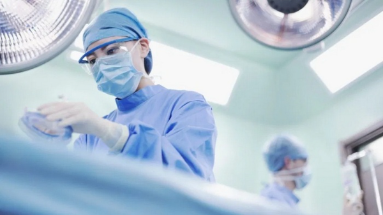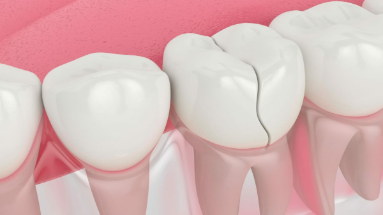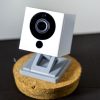Health
What Is BS Cardiology Technology?
If you’ve heard the term “what is bs cardiology technology” and wondered what it is, you’re not alone. This innovative medical technology has been gaining traction in recent years as a safe and effective way to diagnose and treat various cardiac conditions. In this blog post, we’ll look at what bs cardiology technology is and how it is use in the medical field. We’ll discuss the benefits of this technology, as well as its potential risks and limitations. Finally, we’ll examine how we can apply bs cardiology to improve patient care.
What Is BS Cardiology Technology?
Bs cardiology is a medical technology use to diagnose, treat, and manage cardiovascular conditions. This technology has around for many years but has evolve significantly in recent years with more advanced imaging techniques and other technological advances.
What is bs cardiology technology typically includes imaging techniques such as echocardiography, magnetic resonance imaging (MRI). These techniques allow doctors to gain a more comprehensive view of the heart and its functions and detect and monitor any abnormalities or issues that may be present.
In addition, bs cardiology also includes surgical procedures, such as coronary artery bypass grafting, heart valve repair and replacement. Transcatheter aortic valve implantation (TAVI), pacemaker implantation, and other minimally invasive cardiac treatments. It also includes various therapies and medications used to treat cardiovascular conditions.
By using bs cardiology, healthcare professionals can provide better care for patients with cardiovascular diseases or conditions. With this technology, physicians can make more accurate diagnoses, treat illnesses more effectively, and monitor patient progress more closely.
Overall, what is bs cardiology technology is an important part of modern healthcare that helps improve the quality of care for those suffering from cardiovascular diseases or conditions.
The Benefits Of BS Cardiology Technology

B-mode ultrasound or BS cardiology has several benefits that make it an attractive option for medical practitioners. It is a non-invasive method of imaging, meaning that it requires no cutting or surgical intervention to produce a medical image. This makes it safe for patients and doctors as there are no major risks associate with the process. Additionally, it does not require any radiation exposure, making it an even more appealing option for those at risk for radiation-related illnesses.
BS cardiology is also very accurate, providing detailed images of the heart, which can help diagnose and treat conditions quickly. It also allows for dynamic imaging, meaning the doctor can observe the heart’s movements in real-time. This allows for more accurate diagnoses and faster treatment of any issues. It also provides follow-up examinations that can monitor the condition’s progression or treatments.
Furthermore, bs cardiology is relatively inexpensive compare to other forms of imaging, making it much more accessible to those with limited financial resources. Finally, what is bs technology is easy to use, allowing doctors to quickly and accurately diagnose and treat conditions in a short period.
Scope Of BS Cardiology Technology
BS cardiology has been use to diagnose and treat various medical conditions. It is use to monitor the heart and vascular system, diagnose and treat arrhythmias, assess cardiac function, and diagnose and treat heart valve diseases. It is also use to image blood vessels and measure blood flow, evaluate changes in blood pressure, and diagnose congenital heart defects. In addition, bs technology is use to monitor the heart’s activity during exercise, analyze coronary artery disease, and diagnose and manage hypertensive heart disease.
The scope of bs cardiology is constantly expanding. Technological advances have enabled the development of portable devices for monitoring the heart outside the hospital setting. This has allowed for more comprehensive cardiac care for patients at home or elsewhere. Newer technologies, such as 3D imaging and stress testing, allow for an even more detailed assessment of cardiac function. Furthermore, advances in imaging technology have enabled the use of what is bs cardiology in conjunction with other imaging modalities such as MRI and CT scans. As a result, bs cardiology has become an important tool in diagnosing and managing cardiac conditions.
The Drawbacks Of BS Cardiology Technology
One of the primary drawbacks of bs technology is that it can be difficult to interpret the results. Without proper training, it is easy to misinterpret test results or make erroneous conclusions. Additionally, there are some ethical issues when using bs cardiology technology. For instance, depending on how the data is used, it could lead to discrimination in insurance coverage or other aspects of healthcare.
Furthermore, due to its relative novelty, bs technology is still relatively expensive compare to traditional testing methods. Many medical facilities may not have access to this type of technology. Additionally, there may be regulatory and privacy issues when collecting and storing data via bs technology. Finally, although the accuracy of bs cardiology technology is improving, it still has room for improvement.
The Future Of BS Cardiology Technology

The potential for what is bs cardiology technology is vast, and the applications will continue to expand as advancements are made in the field. We are likely to see further breakthroughs in developing highly accurate and precise imaging techniques and more efficient and cost-effective ways of performing cardiac diagnostics and treatments. Additionally, the combination of what is bs cardiology technology and artificial intelligence (AI) allows physicians to interpret data from these scans more accurately, quickly, and efficiently than ever before.
In the near future, bs technology is expected to play an even greater role in diagnosing and treating cardiac diseases. It will become a primary tool use for screening and detecting early signs of heart disease, helping identify issues before they become life-threatening. By incorporating AI into bs cardiology technology, physicians can also identify underlying causes of diseases and abnormalities much more quickly and accurately. This will allow them to provide personalized care plans tailored to the individual patient’s needs.
In addition, bs cardiology has already use to create 3D-print models of hearts that can use to practice or teach cardiac surgeries or interventions. As this technology progresses, it could become a valuable tool in preparing surgeons for complex cardiac operations.
The future of bs technology is undoubtedly bright. And its potential to improve the accuracy, efficiency, and effectiveness of cardiac diagnostics and treatments is immense. With continued advancements in this field, what is bs cardiology technology will no doubt revolutionize. The way we diagnose and treat cardiac diseases.
Most Frequently Ask Question
Q1: What Is BS Cardiology Technology?
A1: Bs cardiology technology is medical imaging used to diagnose and monitor cardiac disorders. This technology uses ultrasound waves to capture heart images, allowing doctors to assess its structure, function, and underlying problems.
Q2: What Are The Benefits Of BS Cardiology Technology?
A2: The main advantage of bs technology is that it is non-invasive. This means that doctors can gain accurate information about the heart without performing surgery. This technology also has a high level of accuracy, allowing doctors to make diagnoses more quickly and effectively.
Q3: What Are The Drawbacks Of BS Cardiology Technology?
A3: Although bs cardiology is generally very accurate, it can be limited in certain cases. In particular, if the patient’s anatomy or physiology makes it difficult to capture good images, then the results not as accurate as other imaging techniques. Additionally, bs technology is relatively expensive compared to other imaging methods.
Q4: What Is The Future Of BS Cardiology Technology?
A4: The future of what is bs cardiology technology looks bright. The technology is constantly being improved, with advances in imaging and analysis techniques. That allow for better accuracy and quicker results. Additionally, new applications of this technology are being developed all the time, such as 3D printing and artificial intelligence. All of these developments point to a bright future for bs technology.
Conclusion
BS cardiology is an innovative and valuable tool for patients and healthcare professionals. It enables quick and accurate diagnosis of heart conditions, allowing for the treatment and prevention of potential health issues. While the technology has its drawbacks, such as its cost, it is a worthwhile investment. That is likely to become even more popular in the future. It is important to be informed about the technology and its various. Benefits to make informed decisions regarding your own health care.


















